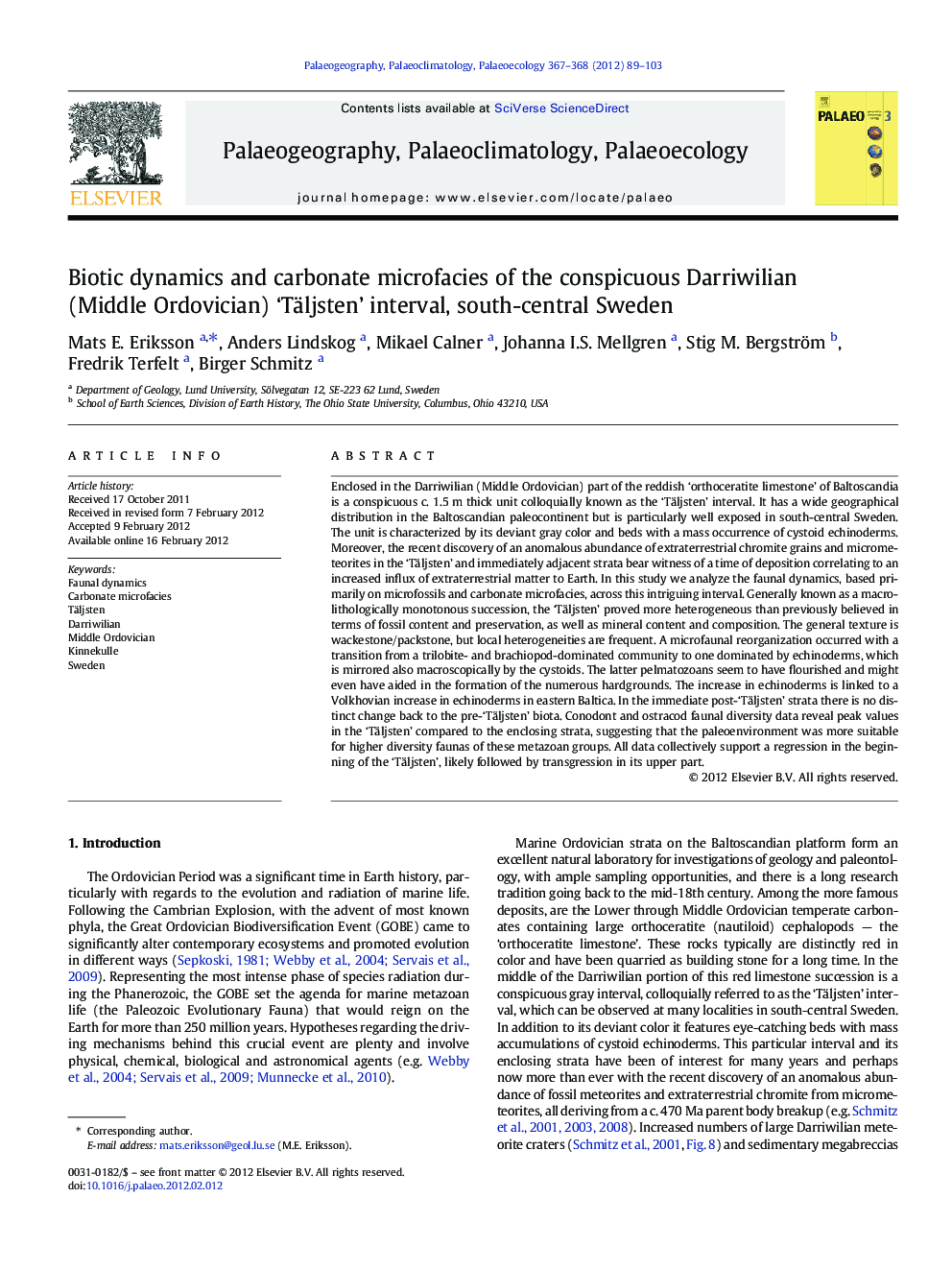| کد مقاله | کد نشریه | سال انتشار | مقاله انگلیسی | نسخه تمام متن |
|---|---|---|---|---|
| 4466757 | 1622218 | 2012 | 15 صفحه PDF | دانلود رایگان |

Enclosed in the Darriwilian (Middle Ordovician) part of the reddish ‘orthoceratite limestone’ of Baltoscandia is a conspicuous c. 1.5 m thick unit colloquially known as the ‘Täljsten’ interval. It has a wide geographical distribution in the Baltoscandian paleocontinent but is particularly well exposed in south-central Sweden. The unit is characterized by its deviant gray color and beds with a mass occurrence of cystoid echinoderms. Moreover, the recent discovery of an anomalous abundance of extraterrestrial chromite grains and micrometeorites in the ‘Täljsten’ and immediately adjacent strata bear witness of a time of deposition correlating to an increased influx of extraterrestrial matter to Earth. In this study we analyze the faunal dynamics, based primarily on microfossils and carbonate microfacies, across this intriguing interval. Generally known as a macrolithologically monotonous succession, the ‘Täljsten’ proved more heterogeneous than previously believed in terms of fossil content and preservation, as well as mineral content and composition. The general texture is wackestone/packstone, but local heterogeneities are frequent. A microfaunal reorganization occurred with a transition from a trilobite- and brachiopod-dominated community to one dominated by echinoderms, which is mirrored also macroscopically by the cystoids. The latter pelmatozoans seem to have flourished and might even have aided in the formation of the numerous hardgrounds. The increase in echinoderms is linked to a Volkhovian increase in echinoderms in eastern Baltica. In the immediate post-‘Täljsten’ strata there is no distinct change back to the pre-‘Täljsten’ biota. Conodont and ostracod faunal diversity data reveal peak values in the ‘Täljsten’ compared to the enclosing strata, suggesting that the paleoenvironment was more suitable for higher diversity faunas of these metazoan groups. All data collectively support a regression in the beginning of the ‘Täljsten’, likely followed by transgression in its upper part.
► Conspicuous Darriwilian ‘Täljsten’ interval, Baltoscandia.
► Regressive–transgressive cycle.
► Faunal reorganizations and diversity peaks.
► Brachiopod-dominated to echinoderm-dominated community.
► Carbonate microfacies with wackestone/packstone texture.
Journal: Palaeogeography, Palaeoclimatology, Palaeoecology - Volumes 367–368, 15 December 2012, Pages 89–103